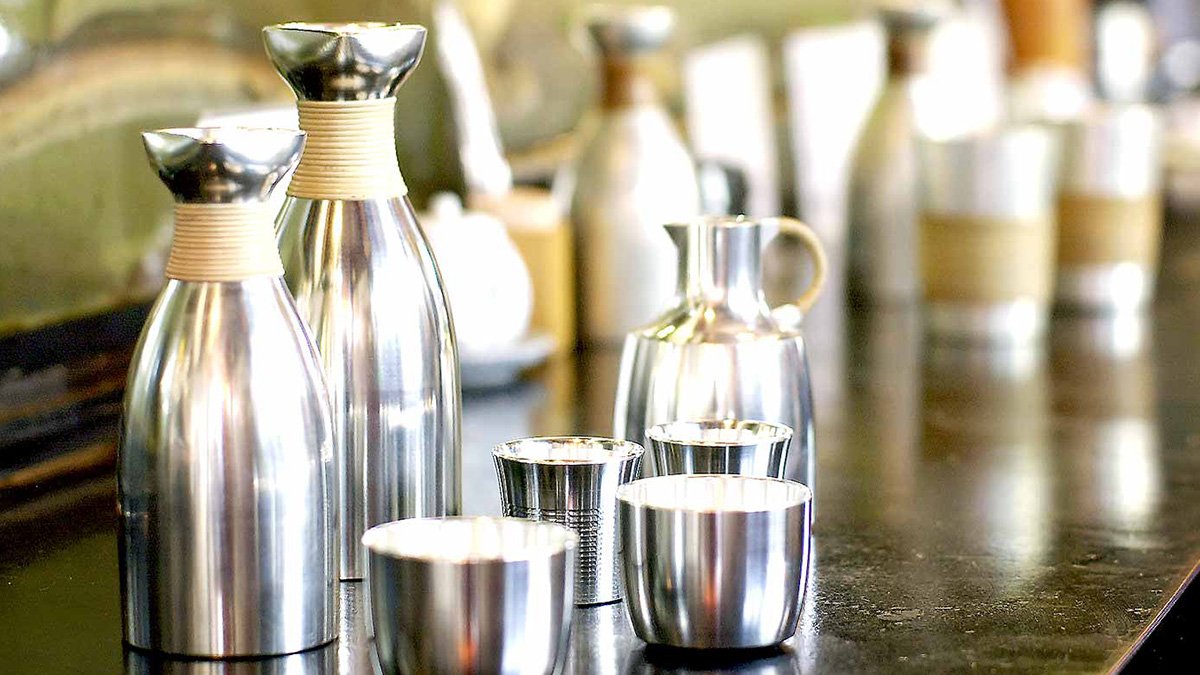free
Description

This polished pewter sake set features two guinomi sake cups and a chirori sake pitcher.
We produce about 70% of the tin products made in Japan.
Tin has the effect of absorbing impurities and purifying water, and you will be surprised at the mellow change in taste produced in sake served in tin.
Please enjoy a drink from this luxurious sake set made from Osaka Naniwa Pewterware, a tradition that has continued for more than 300 years since the Edo period.
Information
| Manufacturer | Osaka Suzuki |
|---|---|
| Country of origin | Osaka, Japan |
| Technique | Osaka Naniwa Pewter Ware |
| Material | With tin and paulownia box |
| Size | Chirori: φ2.71" * H4.13", Guinomi: φ2.12" * H1.69"(千呂利:径6.9*高10.5, ぐい呑:径5.4*高4.3cm) |
| Weight | 0 lbs(g) |
| Capacity | Chirori: 7.1oz(210ml), Guinomi: 2.37oz(70ml) |
| Electronic Equipment | |
| Note | You can put your name and logo on the bottom of the swallow |
| Delivery Time | 1-2 weeks (if out of stock + 2-3 weeks) |
Brand history and characteristics
How Japanese Products Can Be Such High Quality
Payment & Security
Your payment information is processed securely. We do not store credit card details nor have access to your credit card information.
![[SAKE BOTTLE] GENBU 3-PIECE TIN SAKE SET | OSAKA NANIWA PEWTER WARE](http://en.thebecos.com/cdn/shop/products/osakasuzuki082_021_{width}x.jpg?v=1602631711)
![[SAKE BOTTLE] GENBU 3-PIECE TIN SAKE SET | OSAKA NANIWA PEWTER WARE](http://en.thebecos.com/cdn/shop/products/genbu01_{width}x.jpg?v=1602631714)
![[SAKE BOTTLE] GENBU 3-PIECE TIN SAKE SET | OSAKA NANIWA PEWTER WARE](http://en.thebecos.com/cdn/shop/products/osakasuzuki082_021_130x.jpg?v=1602631711)
![[SAKE BOTTLE] GENBU 3-PIECE TIN SAKE SET | OSAKA NANIWA PEWTER WARE](http://en.thebecos.com/cdn/shop/products/genbu01_130x.jpg?v=1602631714)

